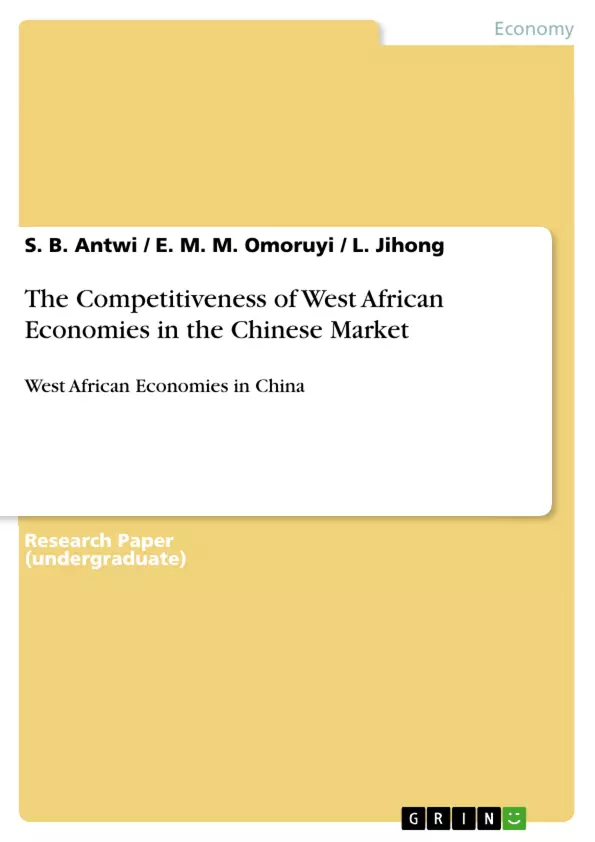West Africa is one of the regions on the African continent with abundant natural resources ranging from vast forest and arable land to mineral deposits. According to UN classification the region is endowed with about one-third of the least developed countries (LDCs) in Africa. The region has come under the spot light of most emerging economies like China, India, Brazil and other developed economies with the basic interest in the region’s natural resources. How competitive West African economies are in their respective trading partners market to facilitate specialization in their exports has been a major issue. This paper analyzes the competitiveness and the pattern of trade flows of this sub region in the Chinese market to help both China and the sub region to mutually benefit from their trade partnership. Revealed comparative advantage index was used as an analytical tool with time series data from 2000-2010. The results indicated that West Africa enjoys revealed comparative advantage in ten out of the 63 product groups.
Inhaltsverzeichnis (Table of Contents)
- Introduction
- Selected Literature on Revealed Comparative Advantage
- China-West Africa Trade Relation
- Revealed Comparative Advantage: Concept and Measurement
- Comparative Advantage Analysis of China and Sixteen West African States
- Inter-temporal Variation of West African Economies RCA
- Conclusions
Zielsetzung und Themenschwerpunkte (Objectives and Key Themes)
This paper aims to analyze the competitiveness of West African economies in the Chinese market, identifying potential areas for specialization and mutual benefit in trade partnership. It explores the patterns of trade flows between the two regions, with a particular focus on the revealed comparative advantage (RCA) of West African countries.
- Revealed comparative advantage of West African economies in the Chinese market.
- Trade patterns and flows between China and West Africa.
- Potential for specialization and mutual benefit in trade partnership.
- Analysis of RCA to identify advantageous sectors and products.
- Implications for policy makers in West Africa.
Zusammenfassung der Kapitel (Chapter Summaries)
The paper begins with a review of existing literature on revealed comparative advantage, highlighting various studies that have examined the impact of China and India on African economies. The analysis includes discussions on the trade patterns of primary commodities, manufactured goods, and the potential for both gains and losses for African countries in their trade relationships with these emerging economies.
The paper then delves into the specific trade relationship between China and West African economies, providing context for the subsequent analysis. A comprehensive explanation of the concept and measurement of revealed comparative advantage is presented, setting the stage for the empirical analysis.
The core of the paper lies in the detailed analysis of the comparative advantage of China and sixteen West African states. This section utilizes static and dynamic RCA analysis to identify key sectors and products where West African economies have a competitive edge.
The final section, focusing on the inter-temporal variation of West African economies' RCA, explores how these patterns have evolved over time. This section offers valuable insights into the dynamic nature of comparative advantage and its implications for trade policies.
Schlüsselwörter (Keywords)
The primary keywords and focal topics in this paper are revealed comparative advantage, trade, and West Africa. The research focuses on understanding the competitive strengths of West African economies within the Chinese market, using RCA as a key analytical tool. Other crucial concepts include trade patterns, specialization, and the potential for mutual benefit in the trade relationship between China and West Africa.
- Quote paper
- S. B. Antwi (Author), E. M. M. Omoruyi (Author), L. Jihong (Author), 2012, The Competitiveness of West African Economies in the Chinese Market, Munich, GRIN Verlag, https://www.grin.com/document/199512



